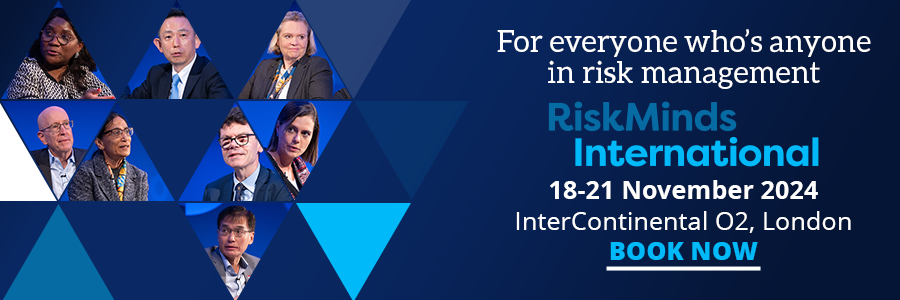Model risk management is evolving to govern generative AI

As banks navigate an increasingly complex financial landscape, the intersection between model risk management (MRM) best practices and generative AI governance expectations presents a transformative opportunity. While traditional model risk management approaches have served us well, they're struggling to meet the unique challenges of generative AI including unpredictable outputs, complex model transparency, ethical concerns, and the rapid pace of change. The question isn't whether to embrace generative AI, but how to better compete by smartly and responsibly using your data and collective expertise.
The challenge: Beyond traditional model risk management
Today's banking models are no longer just complex – they're exponentially intricate, incorporating artificial intelligence and machine learning at unprecedented levels. This complexity creates a paradox: the very tools that make our models more powerful also make them harder to validate, monitor, and govern. Traditional MRM frameworks and systems, designed for simpler models, are reaching their limits.
Think about how banks currently validate and manage their traditional statistical models. Teams of experts pour over datasets, conduct manual reviews, write comprehensive documentation, and rely heavily on historical data. Once a model is in production, its performance is often manually calculated and reviewed a few times a year. But in a world where black swan events are becoming more frequent and market conditions can shift overnight, this approach leaves dangerous blind spots. We need a paradigm shift to properly scale to give AI the more frequent and detailed attention they require – where validation, monitoring, and reporting can be automated to provide the right information at the right time to properly manage in real time.
The generative AI revolution in risk management
Imagine a risk management framework that doesn't just react to changes but anticipates them. This is where generative AI shines. By creating synthetic data that mirrors real-world patterns, generative AI allows banks to stress-test their models against scenarios that haven't happened yet but could. It's like having a sophisticated simulation engine that can predict how your risk models will perform under countless potential future states.
But the real power of generative AI lies in its ability to transform three critical areas of model risk management:
- Enhanced model validation:
Gone are the days of limited scenario testing. Generative AI can create millions of realistic "what-if" scenarios, from market crashes to cyber-attacks, allowing banks to identify model vulnerabilities before they become problems. This isn't just about more testing – it's about smarter testing that uncovers hidden risks and strengthens model resilience. - Dynamic risk monitoring:
Traditional monitoring is like taking periodic snapshots of model performance. Generative AI enables continuous, real-time monitoring that can detect subtle shifts in model behaviour or market conditions. This early warning system allows banks to adjust their models proactively rather than reactively, potentially preventing significant losses or compliance issues. - Automated governance and documentation:
Perhaps most revolutionary is how generative AI is transforming model governance. By automating routine documentation and generating detailed model behaviour analyses, it frees up risk managers to focus on strategic decisions. This isn't about replacing human judgment – it's about enhancing it with AI-powered insights.
The road ahead: Challenges and opportunities
While the potential of generative AI in model risk management might be our best tool to govern AI, implementation isn't without challenges. Banks must navigate regulatory requirements, ensure model transparency, and maintain ethical standards. The key is to view these challenges not as roadblocks but as opportunities to develop more robust frameworks that combine the best of human expertise with AI capabilities.
Think of it this way: just as the introduction of stress testing transformed banking after the 2008 financial crisis, generative AI is poised to revolutionise how we think about model risk management. Banks that successfully integrate generative AI into their MRM frameworks will gain a significant competitive advantage, not just in risk management but in overall operational efficiency and regulatory compliance.
Building the future of risk management
The future of model risk management lies in creating an ecosystem where traditional risk management principles work in harmony with generative AI capabilities. This means:
- Developing hybrid validation approaches that combine human expertise with AI-powered analysis
- Creating transparent, explainable AI systems that satisfy both regulatory requirements and business needs
- Building ethical frameworks that ensure responsible use of synthetic data and AI-generated insights
Looking forward
As we stand at this technological crossroad, it's clear that generative AI isn't just another tool in the risk management toolkit – it's a catalyst for fundamental change in how banks approach model risk. The banks that thrive in the coming years will be those that embrace this change while maintaining the rigorous standards that the industry demands.
The question for risk managers and banking executives isn't whether to adopt generative AI, but how to implement it in a way that enhances rather than replaces existing risk management frameworks. The future of banking risk management is being written now, and generative AI is holding the pen.
As we move forward, the successful integration of generative AI into model risk management will require collaboration between risk managers, technologists, and regulators. Together, we can build a more resilient, efficient, and forward-looking banking system that's better equipped to handle the challenges of tomorrow. To learn more visit SAS website.
